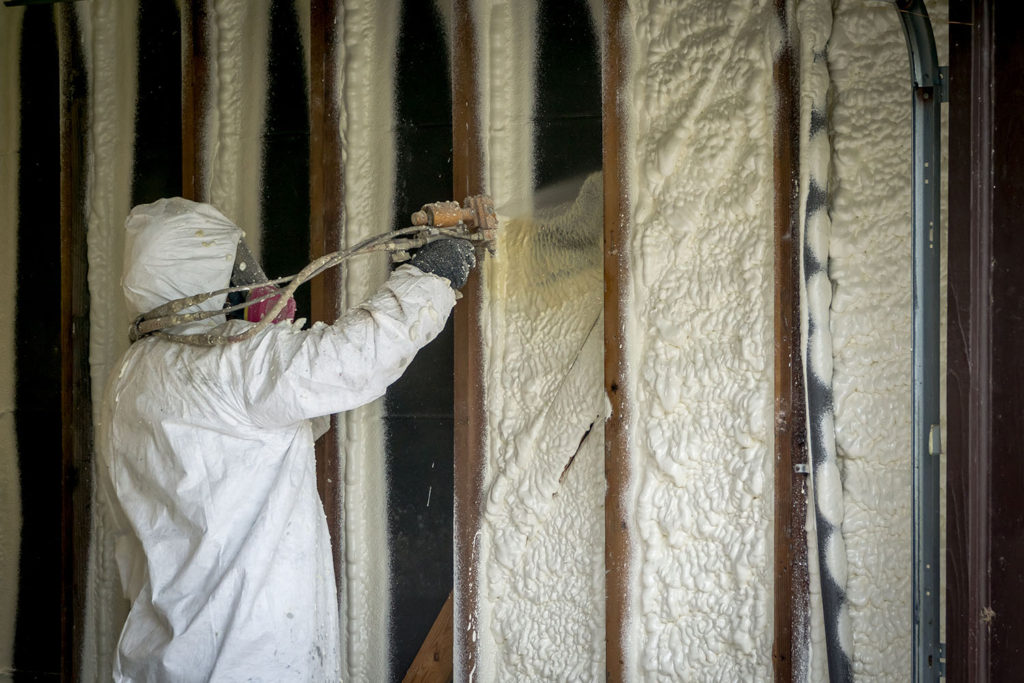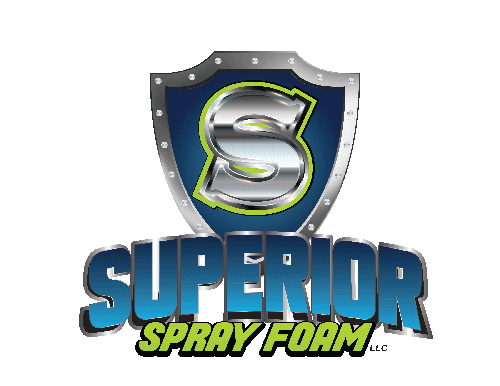New Build or Remodel

New Construction Insulation
Increase your asking price or rental income by adding high-quality insulation to your new structure. This feature is valued by potential buyers but is too often overlooked by building contractors. Not only will high-quality insulation save new owners or tenants money on their monthly energy bill, but soundproofing the structure and reducing maintenance costs over the long-term may be the final selling points you need to close a sale.
Retrofit Insulation Replacement
It is estimated that 65% of homes in America are poorly insulated. Older homes have many charming features, but aging and antiquated insulation is not one of them. Whether wads of newspaper were used when the house was originally built or nothing at all, you can make your vintage residence healthy and comfortable no matter what temperature it is outside.
If you’re looking to re-insulate your home, you’ve probably stumbled upon spray foam insulation as an option. If yours is an older home, you’re probably already somewhat aware of the lower R-value insulation found in older houses like yours. If the insulation in your home is more than 20 years old, its effectiveness has deteriorated. If your house was built prior to 1984, it most likely needs more insulation.
Before you begin, you should have a good understanding of what R-value is and how it relates to spray foam insulation in particular. You’re in the right place. Read on to learn more about how insulation works and how R-values effect your energy costs.
Remodeling your home?
Whether an attic re-do or a complete home remodel, renovating your home or structure is the perfect time to install new, energy-saving insulation.
Stop heat from escaping
Heat loss can happen anywhere in your home. Typically, 24% of your home’s heat escapes from your attic and roof areas, 20% through your windows, 15% into the ground and a whopping 35% through the walls. (The remaining heat loss is carried away by drafts from open doors, etc.)
If you live in an older house, like most Americans, your high-energy bill likely reflects outdated insulation, leaking ducts and poorly insulated attic and basement areas. You can reduce your monthly bill by up to 50% with modern, energy-efficient insulation.
Building Your Own Home?
You can make the most of your investment with spray foam insulation. New homes are the best suited for spray foam because greater access to wall spaces allows the foam to expand effectively into all difficult-to-access areas.
Moreover, you will be reducing your future home maintenance costs by mitigating ice dams, preventing mold build-ups caused by other insulation types and saving yourself the retrofit headache when the lifespan of other insulations nears its end. Spray foam lasts indefinitely, so long as it is cared for properly.
Using SPF to address various IRC Building Codes
While the immediate and long-term performance attributes, flexibility of use and various types of foaming insulation make a strong case for using the insulation material in residential and commercial construction, how does it address the ever-changing building codes?
Today, each of the 50 states follows a different set of building codes making navigating these codes confusing, particularly for architects or builders that have projects in multiple states. In some cases, the building code changes significantly between the state and certain cities or counties within the state. For example, at the time of writing Arizona had adopted the 2015 IRC Building Code, however, Phoenix was on the 2012 IRC, IBC and IECC code. With the majority of states either on the 2009, 2012 or 2015 code, below are some high-level points to consider and about how spray foam insulation contributes.
2009 IRC Building Code
- Houses built under this code are required to be 15% more energy efficient than the 2006 Building Code
- Prescriptive requirements call for higher insulation levels in most building elements in virtually every climate zone
- This is the first code that prescriptively calls for a home to meet a defined air tightness standard, though no testing is required
- Visual inspection is required for all areas of the house that need air sealing and thermal insulation spray foam can typically attain 8-9% of the needed energy reduction by sealing the house in hard to reach areas
2012 IRC Building Code
- House built under the 2012 Building Code are required to be 30% more energy efficient than the 2006 Building Code
- 2012 Building Code also requires higher insulation levels in many climate zones and introduces “continuous insulation” requirements on the exterior walls in several colder zones
- Homes in Climate Zones 1 to 2 must have an Air Tightness 5 ≤ Air Changes per Hour @ 50 Pascals while homes in Climate Zones 3 to 8 must have an Air Tightness 3 ≤ Air Changes per Hour @ 50 Pascals
- Spray foam insulation easily and reliably achieves 3 Air Changes per Hour @ 50 Pascals
2015 IRC Building Code
- The 2015 IRC Building Code introduces the Energy Rating Index (ERI) number as a measure of overall building energy efficiency and sets an ERI target for performance in each climate zone
- Spray foam insulation still is considered the most economical method to attain the Air Tightness Requirement of 3/5 ACH and lowest ERI
